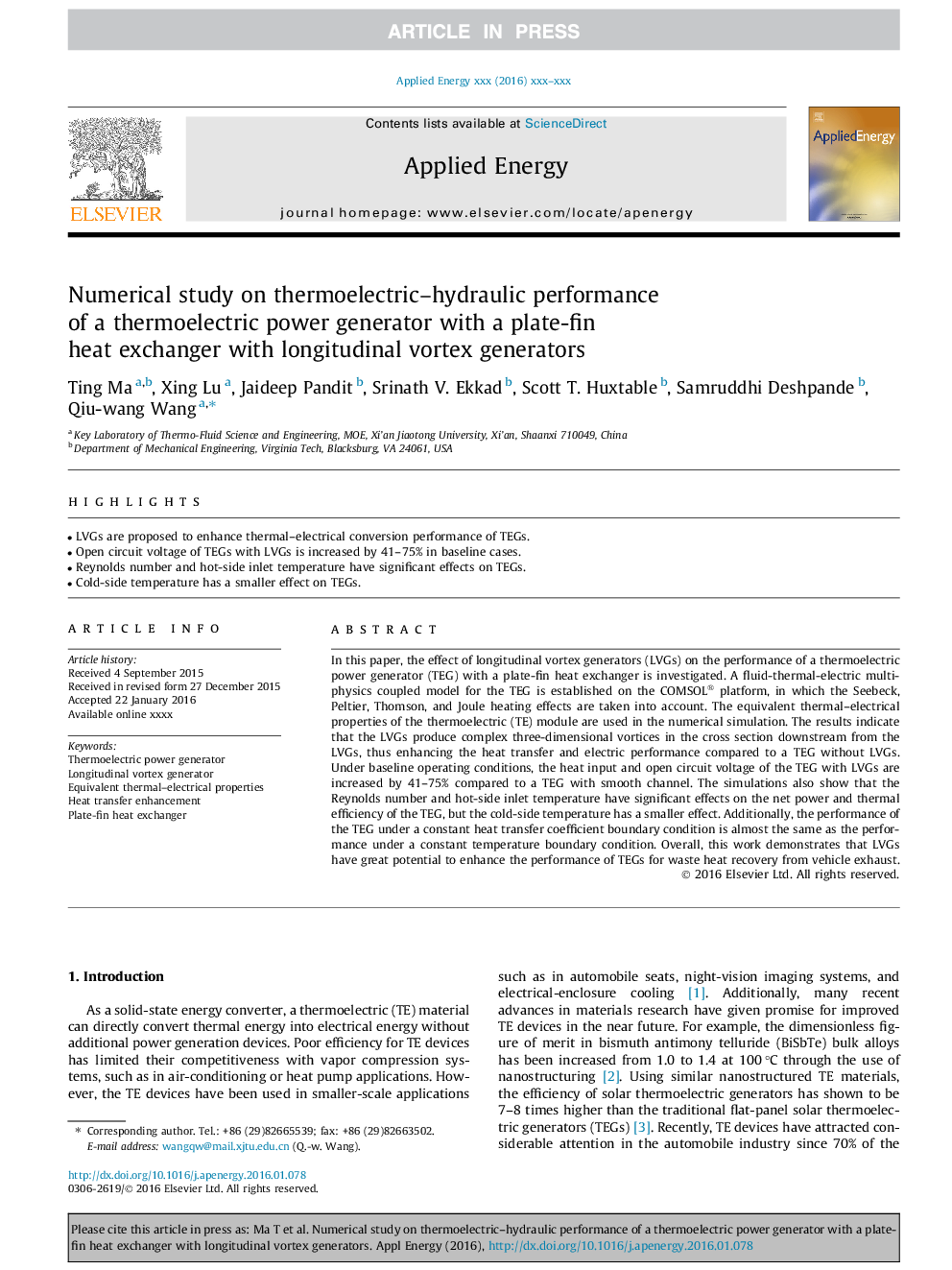| Article ID | Journal | Published Year | Pages | File Type |
|---|---|---|---|---|
| 4917068 | Applied Energy | 2017 | 12 Pages |
Abstract
In this paper, the effect of longitudinal vortex generators (LVGs) on the performance of a thermoelectric power generator (TEG) with a plate-fin heat exchanger is investigated. A fluid-thermal-electric multi-physics coupled model for the TEG is established on the COMSOL® platform, in which the Seebeck, Peltier, Thomson, and Joule heating effects are taken into account. The equivalent thermal-electrical properties of the thermoelectric (TE) module are used in the numerical simulation. The results indicate that the LVGs produce complex three-dimensional vortices in the cross section downstream from the LVGs, thus enhancing the heat transfer and electric performance compared to a TEG without LVGs. Under baseline operating conditions, the heat input and open circuit voltage of the TEG with LVGs are increased by 41-75% compared to a TEG with smooth channel. The simulations also show that the Reynolds number and hot-side inlet temperature have significant effects on the net power and thermal efficiency of the TEG, but the cold-side temperature has a smaller effect. Additionally, the performance of the TEG under a constant heat transfer coefficient boundary condition is almost the same as the performance under a constant temperature boundary condition. Overall, this work demonstrates that LVGs have great potential to enhance the performance of TEGs for waste heat recovery from vehicle exhaust.
Keywords
Related Topics
Physical Sciences and Engineering
Energy
Energy Engineering and Power Technology
Authors
Ting Ma, Xing Lu, Jaideep Pandit, Srinath V. Ekkad, Scott T. Huxtable, Samruddhi Deshpande, Qiu-wang Wang,
